I have two codes for an FFT but I need to merge them, because they seems to be working well in some parts. Let me explain. First code:
fft1 = (Bx[51:-14])
fft2 = (By[1:-14])
# NS antena FFT - red
FFTdata = np.sqrt(fft1*fft1)**1
samples = FFTdata.size
# WE antena FFT - blue
FFTdata2 = np.sqrt(fft2*fft2)**1
samples2 = FFTdata2.size
# Adjusting FFT variables
duration = 300 # in seconds
Fs = float(samples)/duration # sampling frequency (sample/sec)
delta_t = 1.0/Fs
t = np.arange(0, samples, 1)*delta_t
FFTdata_freq = np.abs(np.fft.rfft(FFTdata))**1
FFTdata2_freq2 = np.abs(np.fft.rfft(FFTdata2))**1
freq = np.fft.rfftfreq(samples, d=delta_t)
freq2 = np.fft.rfftfreq(samples2, d=delta_t)
# Printing data
plt.semilogy(freq, FFTdata_freq, color='r')
plt.semilogy(freq2, FFTdata2_freq2, color='b')
plt.xticks([0,20,40,60,80,100,120,140,160,180,200,220,240,260,280,300,
320,340,360,380,400,420,440])
Second code:
# Number of samplepoints
N = 600
# sample spacing
T = 300.0 / 266336.0
x = np.linspace(0.0, N*T, N)
y = np.sin(50.0 * 2.0*np.pi*x) + 0.5*np.sin(80.0 * 2.0*np.pi*x)
yf = fft(y)
xf = np.linspace(0.0, 1.0/(2.0*T), N/2)
plt.plot(xf, 2.0/N * np.abs(yf[0:N/2]))
And now the problem. I have two codes for FFT, but I do not know how to make them work. Well first code shows my data correctly, on the chart you have upper draw, but the scale is wrong, I need that upper chart situated where the bottom draw is placed. I do not know how to do this. Any ideas? fft1 and fft2 are data arrays. Everything happens in 300s = 300000ms.
After changing code thanks to @zck it looks like this from scipy.signal import welch
plt.subplot(212)
plt.title('Fast Fourier Transform')
plt.ylabel('Power [a.u.]')
plt.xlabel('Frequency Hz')
fft1 = (Bx[51:-14])
fft2 = (By[1:-14])
for dataset in [fft1]:
dataset = np.asarray(dataset)
psd = np.abs(np.fft.fft(dataset))**2.5
freq = np.fft.fftfreq(dataset.size, float(300)/dataset.size)
plt.semilogy(freq[freq>0], psd[freq>0]/dataset.size**2, color='r')
for dataset2 in [fft2]:
dataset2 = np.asarray(dataset2)
psd2 = np.abs(np.fft.fft(dataset2))**2.5
freq2 = np.fft.fftfreq(dataset2.size, float(300)/dataset2.size)
plt.semilogy(freq2[freq2>0], psd2[freq2>0]/dataset2.size**2, color='b')
I applied some changes. I am only missing Hamming Window, can anybody help, to make from this chart:

